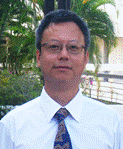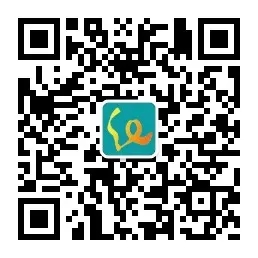主讲人:Prof. Hua Zhang
时间: 2019年9月15日上午10:30
地点: 深圳大学西丽校区B1-420会议室

报告人简介:
Dr. Hua Zhangobtained his B.S. and M.S. degrees at Nanjing University in China in 1992 and1995, respectively, and completed his Ph.D. with Prof. Zhongfan Liu at PekingUniversity in China in July 1998. He joined Prof. Frans C. De Schryver’s groupat Katholieke Universiteit Leuven (KULeuven) in Belgium as a Research Associatein January 1999. Then he moved to Prof. Chad A. Mirkin’s group at NorthwesternUniversity as a Postdoctoral Fellow in July 2001. He started to work at NanoInkInc. (USA) as a Research Scientist/Chemist in August 2003. After that, heworked as a Senior Research Scientist at Institute of Bioengineering andNanotechnology in Singapore from November 2005 to July 2006. Then he joined theSchool of Materials Science and Engineering in Nanyang Technological University(NTU) as an Assistant Professor. He was promoted to a tenured AssociateProfessor on March 1, 2011, and Full Professor on Sept. 1, 2013. In 2019, hejoined the Department of Chemistry in City University of Hong Kong as a ChairProfessor (Herman Hu Chair Professor of Nanomaterials).
He has published 5invited book chapters, 74 patent applications (including 8 granted US patentsand 1 Singapore patent), and over 470 papers, among which 286 papers (about60%) were published in IF>10 journals. Some of his papers have beenpublished in Science (1), Nat. Chem. (5), Nat. Mater. (1), Nat. Catal. (1),Nat. Rev. Mater. (2), Nat. Commun. (8), Sci. Adv. (1), Nat. Protocols (1),Chem. Rev. (2), Chem. Soc. Rev. (13), Acc. Chem. Res. (2), J. Am. Chem. Soc.(16), Angew. Chem. Int. Ed. (28), Adv. Mater. (53), Chem (1), Energy Environ.Sci (12), Mater. Today (1), Adv. Energy Mater. (8), ACS Nano (29), Nano Lett.(14), Adv. Funct. Mater. (4), Chem. Mater. (2), Nano Energy (4), Mat. Horizons(2), ACS Catal. (1), Nat. Sci. Rev. (3), Small (68), Biomater. (1), J. Mater.Chem. A (4), J. Mater. Chem. (9), etc. Until Aug. 27, 2019, the total citationtimes of his papers are over 64,400 with H-index of 122 (Web of Science), andover 75,300 with H-index of 132 (Google Scholar) He has been invited to givemore than 300 Plenary, Keynote or Invited Talks in international conferences,universities and institutes, and served as the Session Chair. He has organizedseveral tens of international conferences and served as the Symposium Chair orConference Co-Chair.
He is one of threeChairmen of the Editorial Board of ChemNanoMat (2015-), sits on the AdvisoryBoard of Chem. Soc. Rev. (2012-), Materials Chemistry Frontiers (2016-), Matter(2019-), Nanoscale (2012-), Nanoscale Horizons (2015-) and NPG Asia Materials(2018-), the Editorial Advisory Board of ACS Nano (2014-), ACS Appl. Mater.Interfaces (2014-), Advanced Materials (2019-), Advanced Functional Materials(2018-), Chem. Mater. (2014-), Nanofabrication (2012-) and Small (2012-), theEditorial Board of ACS Omega (2016-), Applied Materials Today (2015-), Carbon(2013-), CHEM (2016-), Chinese Science Bulletin (2014-), Energy StorageMaterials (2015-), EnergyChem (2018-), Graphene Technology (2016-), MaterialsToday Energy (2016-), NANO (2007-), npj 2D Materials and Applications (2016-)and Science China Materials (2014-), the International Advisory Board ofChemistry – An Asian Journal (2018-), the International Advisory Board ofMaterials Research Express (2014-2016) and the the International EditorialBoard of ChemPlusChem (2012-2015), and the Scientific Advisory Board of SmallMethods (2017-). He is also one of the members of the Advisory Committee of IOPAsia-Pacific (2010-). In 2015, he was elected as an Academician of the AsiaPacific Academy of Materials (APAM). In Nov. 2014, he was elected as a Fellowof the Royal Society of Chemistry (FRSC). In 2016, he was listed in the top 300most cited researchers in the field of materials science and engineering(Elsevier Scopus). In 2015-2018, he was listed in the "Highly CitedResearchers" in Chemistry and Materials Science (Thomson Reuters). In2015, he was listed as one of 19 “Hottest Researchers of Today” in the world inthe World’s Most Influential Scientific Minds 2015 (Thomson Reuters, 2015). In2014, he was listed in the "Highly Cited Researchers 2014" inMaterials Science, and also listed as one of 17 “Hottest Researchers of Today”and No. 1 in Materials and More in the world in the World’s Most InfluentialScientific Minds 2014 (Thomson Reuters, 2014). Moreover, he got the YoungInvestigator Award (Young Giants of Nanoscience 2016, Hong Kong),Vice-Chancellor’s International Scholar Award (University of Wollongong,Australia, 2016), ACS Nano Lectureship Award (2015), World Cultural Council(WCC) Special Recognition Award (2013), the ONASSIA Foundation Lectureship(Greece, 2013), Asian Rising Stars (15th Asian Chemical Congress, 2013), SMALLYoung Innovator Award (Wiley-VCH, 2012) and Nanyang Award for ResearchExcellence (2011).
Dr. Zhang’sresearch is highly interdisciplinary. His current research interests focus onthe (crystal-)phase engineering of nanomaterials and controlled epitaxialgrowth of heterostructures, including the synthesis of ultrathintwo-dimensional nanomaterials (e.g. metal nanosheets, graphene, metal dichalcogenides, metal-organicframeworks, covalent organic frameworks, etc.), novel metallic andsemiconducting nanomaterials, novel amorphous nanomaterials and their hybridcomposites, for various applications such as catalysis, clean energy,(opto-)electronic devices, nano- and biosensors, and water remediation.
讲座摘要:
In this talk, Iwill summarize the recent research on the phase engineering of nanomaterials inmy group. It includes the first-time synthesis of hexagonal-close packed (hcp)Au nanosheets (AuSSs) on graphene oxide, the first-time synthesis of 4H hexagonalphase Au nanoribbons (NRBs), the synthesis of crystal-phase heterostructured4H/fcc Au nanorods, the epitaxial growth of metals with novel phases on theaforementioned Au nanostructures, and the synthesis of amorphous/crystallinehetero-phase Pd nanosheets. In addition, the first-time synthesis of1T'-MoS2 and 1T'-MoSe2 crystals have been achieved. Moreover, the phasetransformation of transition metal dichalcogenide nanomaterials during ourdeveloped electrochemical Li-intercalation method will also be introduced.Interestingly, the lithiation-induced amorphization of Pd3P2S8 is alsoachieved. Currently, my group focuses on the (crystal) phase-based propertiesand applications in catalysis, surface enhanced Raman scattering, waveguide,photothermal therapy, chemical and biosensing, clean energy etc., which webelieve are quite unique and very important not only in fundamental studies,but also in practical applications. Importantly, the concepts of crystal-phaseheterostructures and hetero-phase nanomaterials are proposed.
欢迎有兴趣的师生参加!
